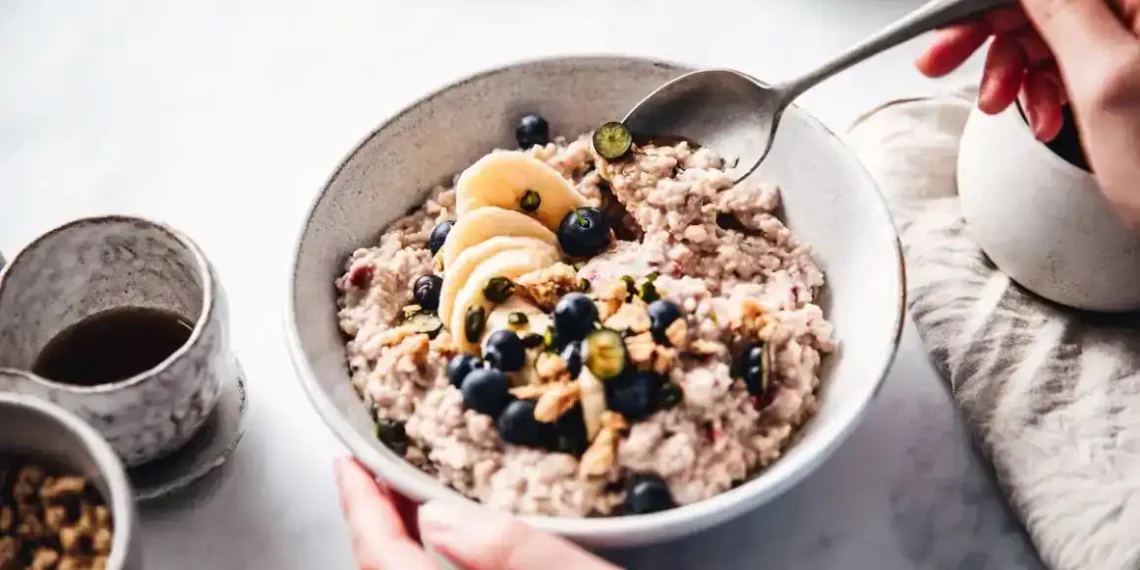Is fibermaxxing the health trend we’ve been missing?
July 27, 2025 – 11:12 AM
A new TikTok trend known as “fibermaxxing” is gaining traction among wellness influencers and nutrition experts alike. While the internet has seen its share of questionable health fads, this high-fiber movement is getting praise from professionals for addressing a widespread dietary shortfall — fiber deficiency.
Below, we explore what fibermaxxing really means, how it impacts your health, and what experts recommend before jumping on board.
What is fibermaxxing?
Fibermaxxing is the practice of intentionally eating meals packed with dietary fiber — often exceeding daily recommendations — to improve digestion, promote weight loss, and support long-term health. The term has gone viral on TikTok, with creators sharing colorful breakfast bowls featuring chia seeds, berries, whole grains, and legumes.
Registered dietitian Lauren Manaker, based in Charleston, South Carolina, sees potential in the trend. “Most Americans aren’t getting nearly enough fiber in their diets, and that’s a problem,” she said in an email. Manaker runs Nutrition Now Counseling, a nutrition communications business.
Why fiber is essential — and often neglected
According to the Dietary Guidelines for Americans, adult fiber needs range from 22 to 34 grams per day, depending on age and gender. Yet more than 90% of women and 97% of men in the U.S. fall short.
“Whether it’s adding chia seeds to everything, sneaking veggies into your meals, or finding new ways to love whole grains, fibermaxxing might just be the trend we didn’t know we needed,” Manaker added.
Gastroenterologist Dr. Kyle Staller, director of the Gastrointestinal Motility Laboratory at Massachusetts General Hospital and a professor at Harvard Medical School, agrees: “Fiber is an oldie but goodie. It’s one of the few dietary recommendations that hasn’t changed for decades.”
Understanding fiber’s function in the body
Dietary fiber comes in two primary forms:
- Soluble fiber dissolves in water to form a gel-like substance, helping lower blood sugar and cholesterol.
- Insoluble fiber does not dissolve in water and promotes regular bowel movements.
“A balance of both types is important,” Manaker said. Too much of one without the other may lead to bloating or constipation. Fortunately, most plant-based foods contain both.
Examples of high-fiber foods include:
- Soluble fiber sources: oats, beans, carrots, apples, citrus fruits, and psyllium
- Insoluble fiber sources: whole-wheat flour, nuts, green beans, cauliflower, and potatoes
Many of the meals shown in #fibermaxxing TikToks — like colorful salads and fruit-topped bowls — feature these ingredients in abundance.
The gut microbiome, fermentation, and fiber quality
Beyond quantity, fiber quality matters too. According to Dr. Staller, fibers vary in viscosity (how thick they are when mixed with water), fermentability (how easily gut bacteria can break them down), and food packaging (raw vs cooked, processed vs whole).
Eating a variety of minimally processed whole foods is generally enough to maintain good gut health, he said — there’s no need to obsess over tracking every type of fiber.
Health benefits of a high-fiber diet
Increased fiber intake has been linked to reduced risks for several chronic diseases, including:
- Colon and rectal cancer: According to Jennifer House, a registered dietitian in Alberta and founder of First Step Nutrition, fiber helps move waste quickly through the digestive tract and feeds beneficial gut bacteria. The result? More short-chain fatty acids like butyrate, which help nourish colon cells and reduce inflammation.
- Cardiovascular disease and high cholesterol: Soluble fiber helps lower LDL (bad) cholesterol by trapping it in the digestive system before it enters the bloodstream.
- Type 2 diabetes and blood sugar spikes: Fiber slows the absorption of glucose after meals, promoting more stable blood sugar levels.
- Obesity and weight gain: High-fiber foods increase satiety, helping people feel fuller longer and potentially reduce overall calorie intake.
Some TikTok creators say fibermaxxing helps “detox” the body. While experts are cautious about that term, House explains it’s not entirely inaccurate: “Since fiber helps you poop, it literally does help remove toxins from your body.”
Fiber-rich foods like leafy greens and nuts also support liver function, a critical organ in natural detoxification.
Additionally, studies are increasingly showing links between gut health and mental health, meaning fiber’s benefits might extend to your mood as well.
How to safely increase your fiber intake
Jumping into fibermaxxing too quickly can lead to digestive discomfort, especially for those not used to a high-fiber diet. “Going from zero to 60 isn’t going to go well,” Staller warned. Fiber pulls water into the digestive tract, which can cause bloating if you’re unprepared.
Start slow:
- Add berries to your morning cereal
- Replace white bread with whole-wheat options
- Swap white rice or pasta for whole-grain versions
- Try lentils or beans in soups or stews
“Give it a week or two, see how your body responds, then increase your intake,” advised House.
Don’t forget hydration. Fiber needs water to function properly — without it, dry stools can worsen bloating, gas, and constipation.
What about supplements?
Psyllium husk-based fiber supplements can help those struggling to meet daily targets, especially if managing conditions like high cholesterol. However, they shouldn’t fully replace food sources.
“Fiber from whole foods brings additional benefits, like essential vitamins, minerals, and antioxidants,” Manaker said.
If you’re unsure how to start, consider consulting a registered dietitian. They can help create a balanced plan based on your individual needs, health conditions, and goals.
Bottom line: Fibermaxxing isn’t just a trend — it’s a wake-up call
While TikTok has launched countless questionable health fads, fibermaxxing appears to be one of the more science-backed and beneficial. With most people falling far short of daily fiber needs, this trend may offer a much-needed nudge toward better gut and overall health.
“Fiber has stood the test of time,” said Dr. Staller. “This might be one TikTok trend worth paying attention to.”
This article was rewritten by JournosNews.com based on verified reporting from trusted sources. The content has been independently reviewed, fact-checked, and edited for accuracy, neutrality, tone, and global readability in accordance with Google News and AdSense standards.
All opinions, quotes, or statements from contributors, experts, or sourced organizations do not necessarily reflect the views of JournosNews.com. JournosNews.com maintains full editorial independence from any external funders, sponsors, or organizations.
Stay informed with JournosNews.com — your trusted source for verified global reporting and in-depth analysis. Follow us on Google News, BlueSky, and X for real-time updates.














